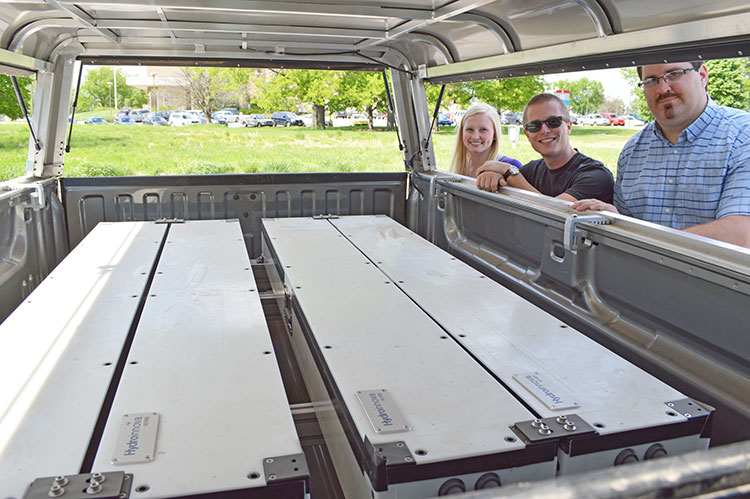
Trenton Franz is much more than a Princeton-educated academic and hydrogeophysicist who joined UNL's School of Natural Resources last year as an assistant professor.
He's also a competitive disc golf player.
"When I'm not chasing around my one- and four-year-old girls, I like to play disc golf," Franz said. "I'm a member of the Professional Disc Golf Association and often play in competitive tournaments around the country."
At his best, Franz had a player rating of 975, which is 2.5 strokes per 18 holes below a world-class professional.
"With the new job and my daughters, that rating has slipped," Franz said. "But someday, I will get it back up and resume playing in tournaments."
For now, Franz is competing in other arenas through opportunities offered by the university. In October, he was one of 13 UNL faculty members selected for the 2013-2014 Research Development Fellows Program. The initiative helps pre-tenure faculty successfully compete for grants.
"The school has been an extremely welcoming place with excellent facilities to conduct research," Franz said.
That research – centered on hydrology and water resources – has taken Franz on a unique, ever-winding path that spans across several states and a few countries.
"I grew up in Fort Collins, Colorado (and) attended the University of Wyoming to play football," Franz said. "I helped lead the Cowboys to a 24-21 victory over UCLA in the 2004 Las Vegas Bowl."
After Wyoming, Franz headed to Princeton University in New Jersey where he earned master's and doctoral degrees.
"The field work for my dissertation, 'Characterizing Dryland Surface Hydrological Dynamics Using Ecohydrological Modeling and Geophysical Observations,' was completed over six different trips to central Kenya," he said.
In 2011, Franz joined the University of Arizona in Tucson to work on COSMOS, an NSF-supported project to measure soil moisture on the horizontal scale of hectometers and depths of decimeters using cosmic-ray neutrons.
When SNR hired him in 2013, Franz said he was excited about the research possibilities that the new position presented.
"I was looking forward to being able to buy all the cool research toys that I got to dream up while being a postdoc," he said. "I was also really looking forward to being a mentor to students, as I had some great ones along the way."
Both of those aspirations have already come to fruition with the arrival of a new cosmic-ray sensor (CRS) housed in Franz's lab.
The CRS measures soil moisture every minute with a horizontal footprint of a 300-meter radius circle and a penetration depth of 30 centimeters. Two students working in Franz's lab will conduct a majority of the hands-on data collection, Franz said.
"This research excites me for two reasons," said William Avery, an environmental studies major who graduated in December and will begin his master's degree program in the fall. "Firstly, when applied to questions of water use efficiency, this technology has the potential to improve precision agriculture and ultimately grow food with less water. Second, the novelty of this project means that there may be other as of yet undiscovered applications that could be significant."
Catie Finkenbiner, a senior water science major from Omaha, said that she hopes working with the CRS and alongside Franz will complement her postgraduate plans.
"I am really interested in grad school, so I hope the experience I gain this summer working with (Franz) and on this project will enhance my grad school application," she said. "I am excited about the new equipment because it means I will get to go out in the field a lot this summer, and I love field work."
Franz, Avery and Finkenbiner collected their first data set in early May, and will continue through the summer.
"We are exploring ways to use the sensor data to help manage hundreds of center pivots simultaneously," Franz said. "This data, combined with remote sensing products, will be very beneficial for helping trigger irrigation at optimal times and in optimal amounts."
— Mekita Rivas, Natural Resources